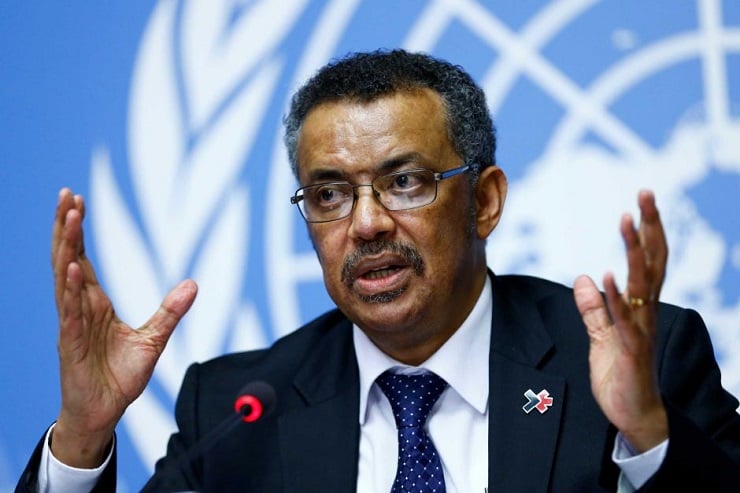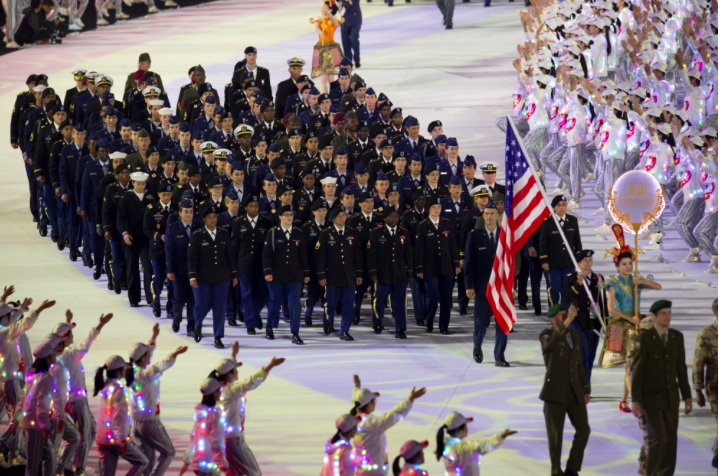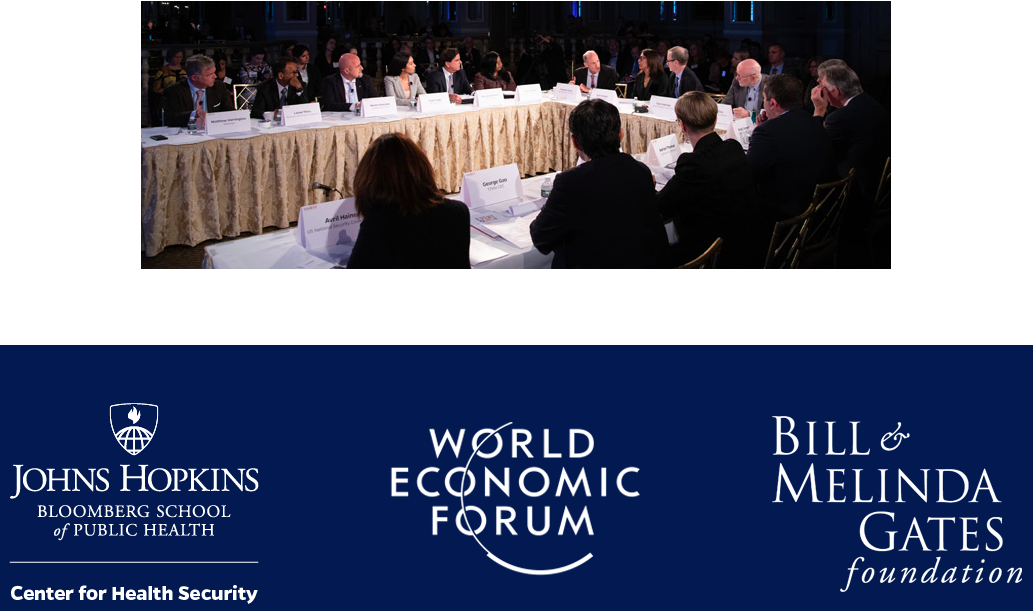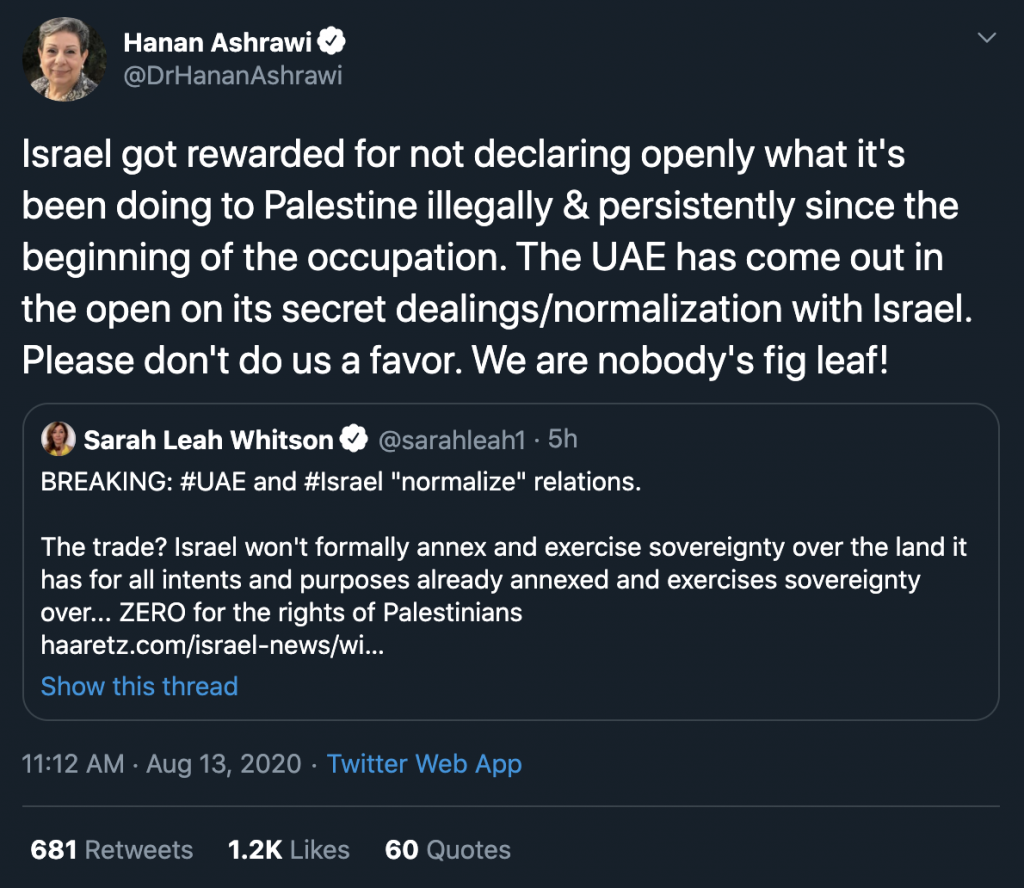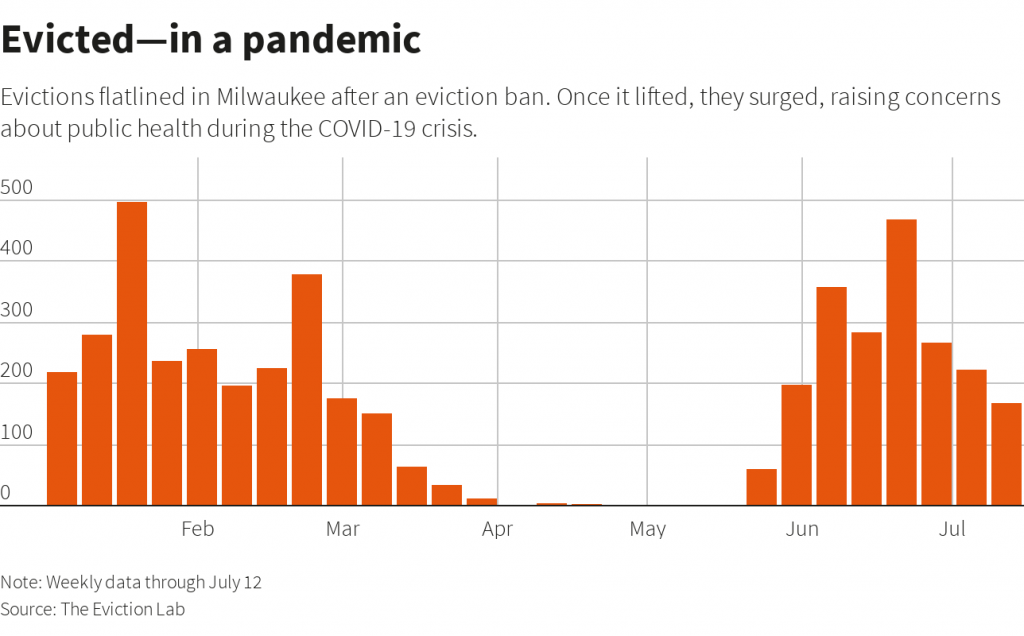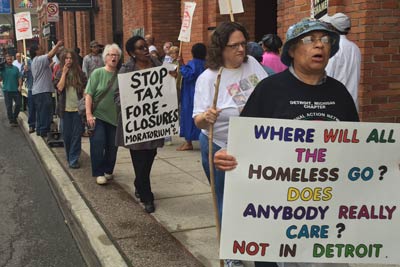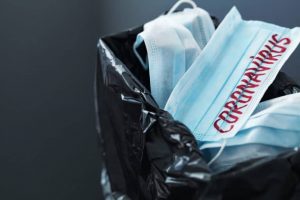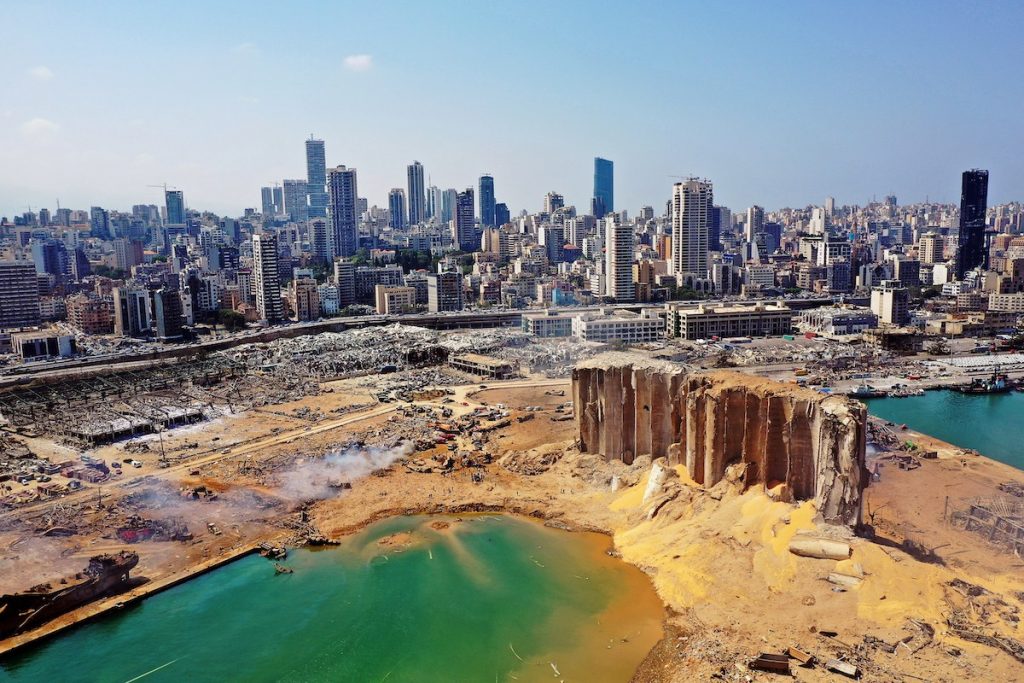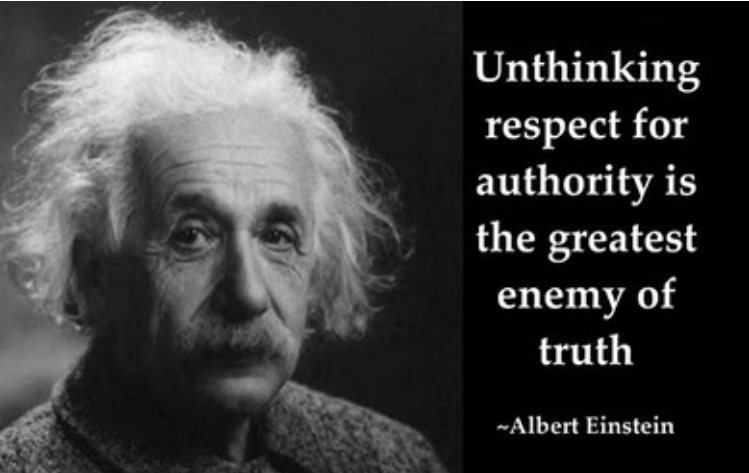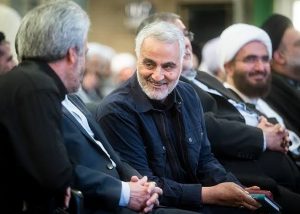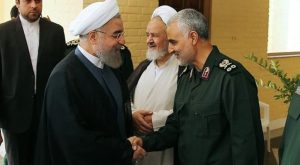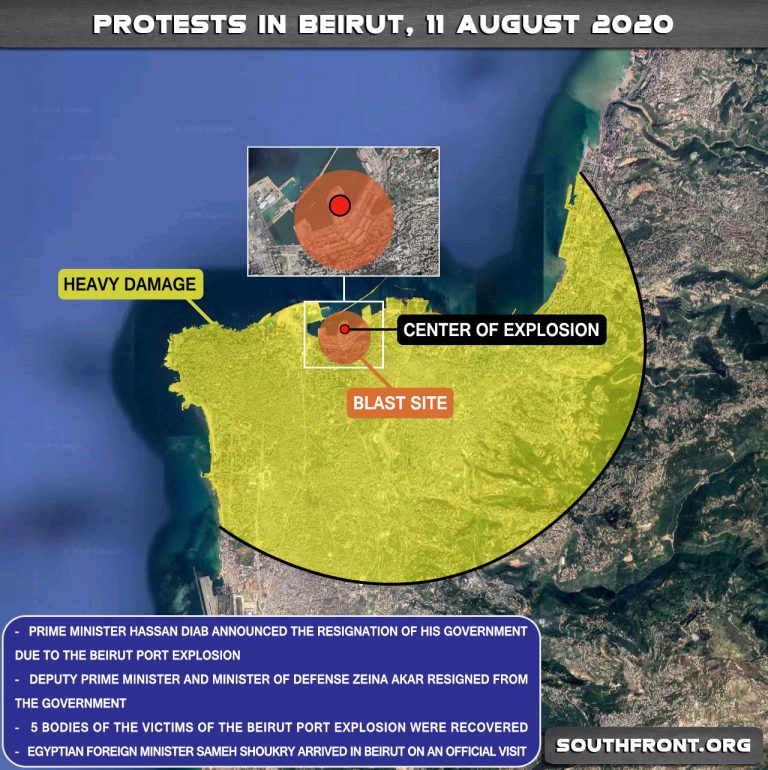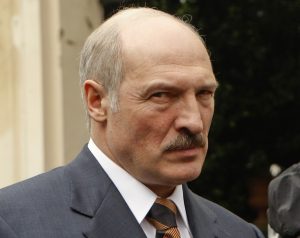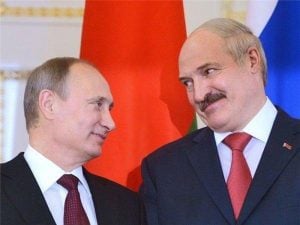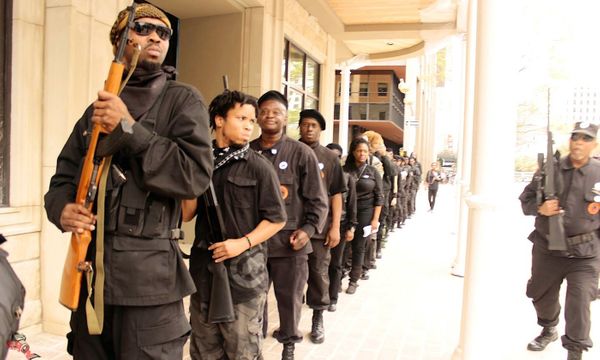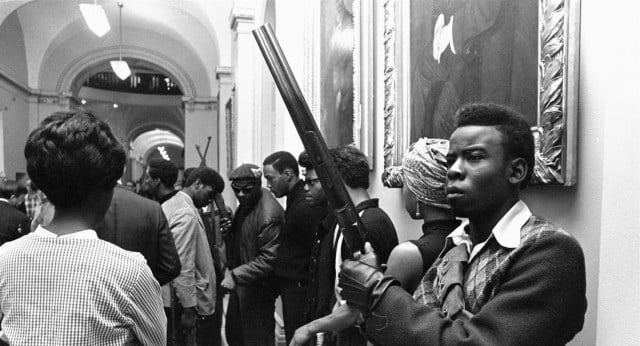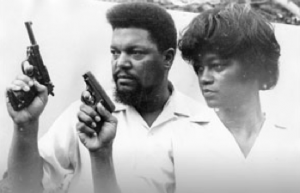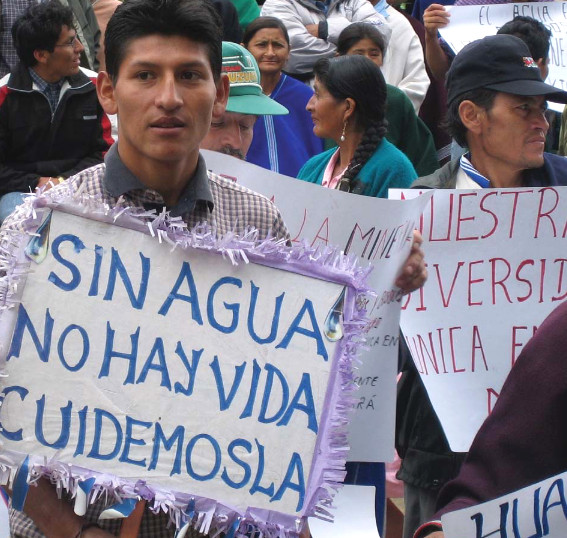As Canadians look back over the 75 years since the mass murders in Hiroshima and Nagasaki, we should reflect on how this country has long punched above its weight when fighting to serve and protect imperialism. This is perhaps especially true when it comes to our Peaceable Kingdom’s so-called “defence” and “security” companies which sell more to America’s warfare/surveillance state than any other other nation on earth.
But many Canadians, being sheltered from knowledge of their country’s deep complicity in the US imperium, are content to cozy themselves with self-righteous delusions about mythical “Canadian values.” The prevailing national narratives, propagated by state institutions, corporations (including the mass media) and similarly captive NGOs, still propagate the fiction that Canada is a beacon of light shining human rights, justice and democracy on the world.
In truth, Canada stands unreservedly for the capitalist model of private exploitation which has shackled the peoples of this planet for centuries in varying forms of slavery, and is now driving us recklessly towards environmental destruction, all in the name of increased profitability for corporations.
Canada’s commitment to aiding and abetting America’s role as the “Global Cop,” patrolling the world and busting heads to impose order and the “rule of law,” is well illustrated by the unrestricted flow of billions of dollars worth of Canadian military technologies to the US every year. Over the decades, much of this high-tech Canadian matériel has been assembled into major US killing machines that have been used to wage dozens of wars, invasions and regime-changes, which Canada prefers to phrase as “peacekeeping” or “international policing operations.” But, whatever they’re called, these multifarious US-led military activities have resulted in the deaths of between 20 to 30 million people since WWII.(1) Oftentimes, these military efforts have been carried out to keep business-friendly dictators in power, to undermine progressive political movements, and/or to overthrow governments deemed to be enemies of the American hegemony to which Canadian governments remain ever so loyal.
The Reaper, a Grimm Parable of Canadian Surveillance/Targeting Technology
To shine some light on the ever-blurry jurisdiction between the realms of global warfare and local police enforcement, let’s use an illustrative example through which to view Canada’s longstanding commitment to strengthening America’s highly-militarized way of policing protests. This case study involves one of the world’s most advanced surveillance, weapons-targeting systems which can also be weaponised to carry “Hellfire” missiles. It is, appropriately enough called the “Reaper,” but it is also known as a Predator B or MQ-9. If inspired by the Brothers Grimm, we could also compare this device to a “Magic Mirror.” It is a looking-glass “eye in the sky” through which the West’s powerful global elites can track and attack those who might dare to challenge their self-glorifying authority as “the fairest of them all.”
This seemingly magical, spy technology has been used of late by US “law-enforcement” agencies eager to look down upon the scurrying masses of antiracist protesters in American cities. But, as we’ll see, the centrepiece of this incredible technology — a cutting-edge, Canadian-made “high-magnification, missile-grade multisensor” technology — was used to great effect one decade ago by Canada’s military. They used this same spy technology aboard warplanes to aid Canada’s civilian police authorities in their monitoring of mass protests against the G8-G20 summit. Ironically, these protesters were tried to shine a critical spotlight on the world’s most powerful heads of state who were then gathering in Toronto to structure their control over the global financial system.
The Reaper is an unmanned aerial drone equipped with this Canadian sensor technology that was used to fly circles around Minneapolis during Black-Lives-Matter protests in late May.(2) Press reports have said that the US Customs and Border Protection(3) was also using some of its other Reaper drones around that time to fly missions over San Antonio, Texas and Detroit, Michigan.(4)
Reapers are among numerous aerial platforms that allow the military minions of ruling authorities (akin to Orwell’s “Big Brother” or the Brother Grimm’s “Evil Queen”) to keep tabs on those who dare to threaten the elite’s supremacy. But besides keeping a watchful eye on adversaries of the establishment, the Reaper can also be used to target and kill them.
Reapers are in fact better known for their weapons-targeting contributions to warfighting than to policing uppity activists who protest in the streets. These drones have, for instance, been used in various wars including those in Afghanistan, Iraq, Somalia, Libya, Mali and Yemen. Perhaps most infamously, the US military used one of its weaponized Reapers to fire the “Hellfire” missile that assassinated Iranian General Qassim Suleimani (and Iraqi counterparts) in Baghdad in January of this year.(5).
Although the Reaper bestows near-magical advantages to murderous global elites, this eerie technology is very real. Its practical, day-to-day functioning relies on crucial, indispensable high-tech systems that are manufactured by two of Canada’s many government-subsidized war industries, CAE(6) and WESCAM.(7)
Dr. Strangelove, General Atomics, Canadair and the RCAF’s nuclear payloads
Before examining in more detail the key roles played by CAE and WESCAM technology in the functioning of Reapers, it is worth looking at an instructive history of events that links this weapons system’s prime contractor to the Canadian government. Reapers are built by General Atomics, which was co-founded some 65 years ago by the much-vilified nuclear physicist Dr. Edward Teller. While aptly nicknamed “the father of the hydrogen bomb,” Teller is still heralded by some for his 1950s work at General Atomics. (Although Teller “hated the association,” he is widely-accepted as the real life model for “Dr. Strangelove,” the eponymous mad scientist played by Peter Sellers in Stanley Kubrick’s 1964 classic, Cold-War satire.)(8)
Back in 1955, during the height of the Cold War, just a decade after the criminal obliteration of Hiroshima and Nagasaki (in which Canada played such a significant role, 9), General Atomics was created as a division of General Dynamics. It had been formed in 1952, thanks in no small part to the great financial success of what had been Canada’s top warplane manufacturer, Canadair. This Canadian Crown Corporation was created by Mackenzie King’s Liberal government in 1944. But after sinking tremendous amounts of public money into Canadair, the Canadian government sold it for a bargain-basement sale price in 1947 to a troubled US submarine builder called Electric Boat.(10)

As General Dynamics’ own version of this history explains:
“By the early 1950s, Canadair’s success began overshadowing that of Electric Boat; some business advisers even suggested that Canadair purchase Electric Boat and operate it as a subsidiary. Instead, on February 21, 1952, a new parent company called General Dynamics Corporation was established to manage the operations of Canadair and Electric Boat.”(11)
Thanks to Canadair, General Dynamics went on to become a very highly-profitable manufacturer of thousands of warplanes, including CF-104 “Starfighters.”(12) The Canadian Air Force operated these nuclear-bomb equipped jets in West Germany as part Canada’s faithful commitment to NATO. Dedicated to carrying out NATO’s nuclear warfighting doctrine, Canada had its warplanes optimized to work as a “nuclear strike force.” Nothing could perhaps better illustrate Canada’s grim willingness to reap the souls of the dead than this.
Nuclear weapons, being the most deadly devices ever conceived, can be seen to symbolize the Spectre of Death. Similarly, those who produce or profit from these technologies personify those mythic characters, the psychopomps, who escort the dead away from the land of the living. As Robert Oppenheimer, “the father of the atomic bomb,” remorsefully said after witnessing the first nuclear detonation on July 16, 1945: “Now I am become Death, the destroyer of worlds.”(13)
Between 1964 and 1971, Canadair “Starfighter” warplanes dutifully carried several kinds of US-made tactical/strategic thermonuclear warheads with variable yields. Between 1965 and 1984, Canada’s CF-101 jets carried American Air-2A “Genie” rockets with 1.5 kiloton nuclear warheads. And, immediately after Liberal Prime Minister Lester Pearson took power, in what amounted to a US-backed coup in 1963, he brought in US W40 fusion-boosted fission nuclear warheads to arm Canada’s CIM-10 “Bomarc” missiles.(14)
As Canadian military historian Dr. John Clearwater has noted:
“From 1963 to 1984, US nuclear warheads armed Canadian weapons systems in both Canada and West Germany. It is likely that during the early part of this period, the Canadian military was putting more effort, money and manpower into the nuclear commitment than any other single activity.”(15)
Having kept its fingers in the production of both warplanes and warships, General Dynamics has since grown to become the world’s fifth largest military industry, with revenues of $36 billion in 2018.(16) It is a behemoth of war, firmly ensconced in the top one percent of global merchants-of-death clubhouse. One of its subsidiaries, General Dynamics Land Systems-Canada, based in London, Ontario, produces the weapons-laden armoured vehicles that Canada has infamously sold to Saudi Arabia. Less infamously, Canada has also sold these same tank-like vehicles to other countries as well including the far-right, US-allied government of Colombia. Even more significantly, Canada has also sold these vehicles to the US military which deployed them on countless missions that “accumulating over 6 million miles” in the Iraq War between 2003 and 2005 alone.(17)
Reaper Canada: Doing our part to serve and protect the US and its ravenous empire
The operation of General Atomics’ pilotless Reaper/Predator drones depends in large part on the complicity of two major Canadian war industries:

(1) CAE (Montreal, QC)
With $995 million in military revenues, is Canada’s top war-profiteering corporation.(18) Among its many contributions to the US war machine, CAE manufactures the Predator Mission Trainer. This “training and mission rehearsal” system uses a “fully-immersive, virtual environment replicating actual operational conditions” to prepare Reaper pilots and crew.18 This CAE flight simulator “delivers an unprecedented level of fidelity and capability in the use of simulation-based training for remotely piloted aircraft pilots and sensor operators,” said Todd Probert, President of CAE’s Defense & Security Group. CAE also notes that its Predator Mission Trainer delivers “initial qualification and aircraft sensor systems training in addition to mission-specific training.” CAE’s mission-training, simulation technology is so realistic that it the allows aircrews to “potentially conduct all training in the simulator without necessarily requiring further training on the actual aircraft.”(19)
(2) WESCAM (Burlington, ON)

This Canadian subsidiary of America’s L3Harris Technologies(20) provides the Reaper drone with the MX-20 Electro-optical/Infrared (EO/IR) imaging system. The MX-20 is WESCAM’s largest, high-magnification, missile-grade multisensor. It sports laser-illuminated, see-in-the-dark surveillance cameras that can identify and engage subjects that are more than 20 kilometres away. As WESCAM notes, the MX-20 is an “advanced targeting solution” that allows Reaper operators to “locate and track targets at long stand-off.” WESCAM puffery goes on to brag that its EO/IR system provides “high-sensitivity multi-spectral sensors for day, low-light and nighttime missions” that “support Intelligence, Surveillance and Reconnaissance and Precision Guided Munitions missions.” These deadly qualities allow Reapers, and other aircraft, to “operate with excellent detection and recognition capabilities from extremely high altitudes.”(21)
Wescam’s high-tech sensor systems provide an almost all-seeing eye in the sky not only for General Atomics’ Reapers but for other military aircraft as well, including Canada’s CP-140 “Aurora” spy planes.(22)
The role of CAE and WESCAM in Spying on Canadian Protests
The 2020 use of Reapers to spy on US protesters was not the first time that CAE and WESCAM technology contributed to the aerial surveillance of mass protests in North America. Battle tested over Yugoslavia, Iraq and Afghanistan, Canada’s Aurora spy planes used Wescam’s MX-20 imaging sensors to watch over the huge 2010 protests in Vancouver and Toronto. These Auroras, named for the Roman goddess of dawn (who was mother of Lucifer, the mythic “bringer of light,” 23) are Canada’s strategic patrol aircraft. As such, they conduct Intelligence Surveillance and Reconnaissance missions.
The Canadian pilots and crew aboard Canada’s Auroras learned their crafts — like their Reaper colleagues — thanks to the CAE’s advanced training and mission rehearsal simulators. Canada’s surveillance aircraft are but one of many dozens of varieties military aircraft that employ CAE technologies.(24)
Although Aurora crews had run missions to track Russian submarines, to pursue Iraqi leaders fleeing death aboard ships in the Persian Gulf, and to target those fighting the foreign occupation of Afghanistan, protesters in Canada became a new target in the Aurora’s sights in 2010. These spy planes were then used to conduct surveillance during two of the biggest domestic “security” operations in Canadian history.
Operation Podium in Vancouver:

The first of these — Operation Podium — took place during the Olympic/Paralympic games in early 2010. Canada’s Air Force described Operation Podium as “the most complex domestic operation ever undertaken in Canada,” and said it was “the largest [Canadian Forces] CF and Air Force deployment in recent memory.”(25) This was also “the first time in Canada” that “video streaming from CP-140” was “operationalised,” i.e., used in a “real world” operation outside a military exercise. And, the Air Force also described it as a “world first,” in terms of using “integrated data links from the Air Force, Navy and [Canadian NORAD Region] CANR, as well as the U.S. Navy, U.S. Air Force and U.S. Coast Guard, into one coherent air and maritime picture.”(26)
Cutting through such technical descriptions, the vice president of Canada’s L-3 Wescam summed up the role of their MX-20 sensors against protesters by saying: “They were used at the Winter Olympics in Vancouver this year providing persistent surveillance in an overview capability to keep an eye out for anyone who might want to cause trouble.”(27)
Operation Cadence in Toronto:
A few months later, the CP-140 was at it again, this time over the turbulent down-town streets of Toronto, during protests against the G8-G20 summit. On June 26(28) and June27,(29) an Aurora aircraft was seen continuously circling over Toronto’s downtown core as thousands of citizens assembled to express opposition to government policies, including Canada’s deep involvement in the US-led wars in Iraq and Afghanistan. An Aurora was also spotted flying nearby over Burlington and Hamilton, Ontario, on June 23,(30) just as excessive “security” restrictions descended upon citizens of the entire region.
The CP-140 that was on the lookout over Toronto was part of what Canada’s military called Operation Cadence. Col. Eyre, then-Commander of a Canadian Mechanized Brigade Group at Canadian Forces Base Petawawa, described it as “the largest security operation in the history of Canada.”(31) It was also a first, said Maj. Kael Rennie and Capt. Matt Crosbie, in that “a Tactical Air Control Party (TACP) saw its first ever major domestic operation in Canada.” This was unusual, they continued, because “Normal TACP duties included the employment of fixed wing and attack helicopters in the employment of air-to-ground munitions. While that works well in Afghanistan, it was obviously not the desired effect for the G8/G20.”(32)
Canada’s then newly battle-tested technology was referred to as the “Overland Equipment Mission Suite” and the “Tactical Common Data Link.” Using L3Wescam cameras affixed to the CP-140s, these new systems provide “full motion video imagery” for the immediate use of army and/or police units on the ground, whether they are battling the Talibhan or ban-the-bomb protesters. As Major CMR Larsen put it in 2010:
“In plain speak: the Aurora can now use its powerful camera system efficiently, and while airborne can actually transmit video to a supported unit…. What we can see from the air, a tactical commander can see on the ground. It is not hard to imagine how this capability greatly adds to the ‘big picture’ required by operational commanders.”(33)
In an even ‘bigger picture’ view of this ‘technological advancement,’ what this means is that the militarisation of policing in Canada has reached phenomenally new heights. The CP-140 aircraft facilitated the government’s highly-militarised, $1 billion response to G8/G20 protests, was operated out of a Canadian Forces Base (CFB) in Trenton, Ontario. Two RCMP officers very happily took turns working 12-hour shifts doing “air services” aboard the CP-140. As RCMP Cpl. Bob Thomas describes it: “We did flight observation for the security on the ground…. Just before both Summits started I moved to CFB Trenton and did all my flying from there as the Summits were going on.”(34) Thomas was chosen for the job because of his experience with “aerial flight observation and infrared camera training.” He was “one of just two RCMP officers assigned to fly with the … surveillance aircraft, a CP-140 Aurora. It was that opportunity that Thomas found most memorable. ‘It was an awesome experience.’”(35)
Canadian crews operating CP-140 Auroras at the Comox Air Force Base on Vancouver Island, BC, (where some of Canada’s Bomarc missiles were armed with US nuclear warheads beginning in 1965(36) aptly call themselves the “Demon Squadron.” In their “vision” statement, they recognize the changing nature of the CP-140’s role, saying: “The Demons will be leaders in a dynamic environment. In our quest for excellence, we will embrace and pursue technological change.”(37) And, in their “mission” statement, Canada’s “Demon” warriors express their willingness to embrace their future wherever it leads, including “to project air power at home and abroad”:
“The 407 Demon Squadron mission is to provide regional, national and expeditionary commanders with a rapidly deployable, self-sufficient, combat [Intelligence, Surveillance and Reconnaissance] ISR and [Anti-Submarine Warfare] ASW attack capability to enable them to project air power at home and abroad.”
The “Demon’s Creed” concludes:
“The Demons are proud warriors….We are the eyes, ears and fists of commanders over the land and sea….We are proud to be recognized as Demons.”(38)
Are Canadian Reapers on the Horizon? More Wars abroad, More Surveillance at Home
The Canadian military may soon be acquiring its very own version of General Atomics’ Reaper drones. In October 2019 Canada’s war department finally narrowed down its search for corporations that could fulfill the military’s demands for a Remotely Piloted Aircraft System. There are now only two competing teams bidding for this lucrative contract to build aerial drones for Canada’s military. These two teams are led by [1] General Atomics, which qualified for the contest with its Reaper drone, and [2] L3 Technologies MAS Inc. which has proposed that Canada purchase Heron TP drones from Israeli Aircraft Industries.(39) This Israeli drone was battle tested in Gaza during the 22-day Israeli offensive there that massacred 1,417 Palestinians in 2008-2009.(40) In June 2009, just a few months after this massacre, the Canadian Forces announced that it had begun leasing Israeli Heron drones from a Canadian military company called Macdonald Dettwiler and Associates (MDA).(41) Canada was soon using these Israel-made drones in Afghanistan.(42)
To build its case for Canada’s acquisition of Reapers, General Atomics, which leads Team SkyGuardian Canada, noted that “We have a long-standing global relationship with CAE and L3 WESCAM.”(43) This “long-standing relationship” does not just relate to their participation in making the Reaper a successful US instrument of war and surveillance. These companies began working together during joint efforts on the Reaper’s precursor, the RQ-1 Predator. Used in Bosnia (1995), Yugoslavia (1999), Afghanistan (2001-2003), Yemen (2002) and Iraq (2003), this low-altitude drone was used primarily for photographic, electronic surveillance and target-acquisition missions. The RQ-1 drone was also weaponized by the CIA so that it could fire missiles to assassinate suspects in the War on Terror, as it did in Yemen in 2002.(44)
In pushing its case for the Reaper, General Atomics has also told the Canadian military that it “look[ed] forward to growing our relationship with MDA as a part of this new team in Canada.”(45) MDA has also proven its strong commitment to serving US wars through its production of such surveillance and weapons-targeting systems as Canada’s RADARSAT satellites.(46)
Unrestricted Flow of Weapons vs. Restricted Flow of Information
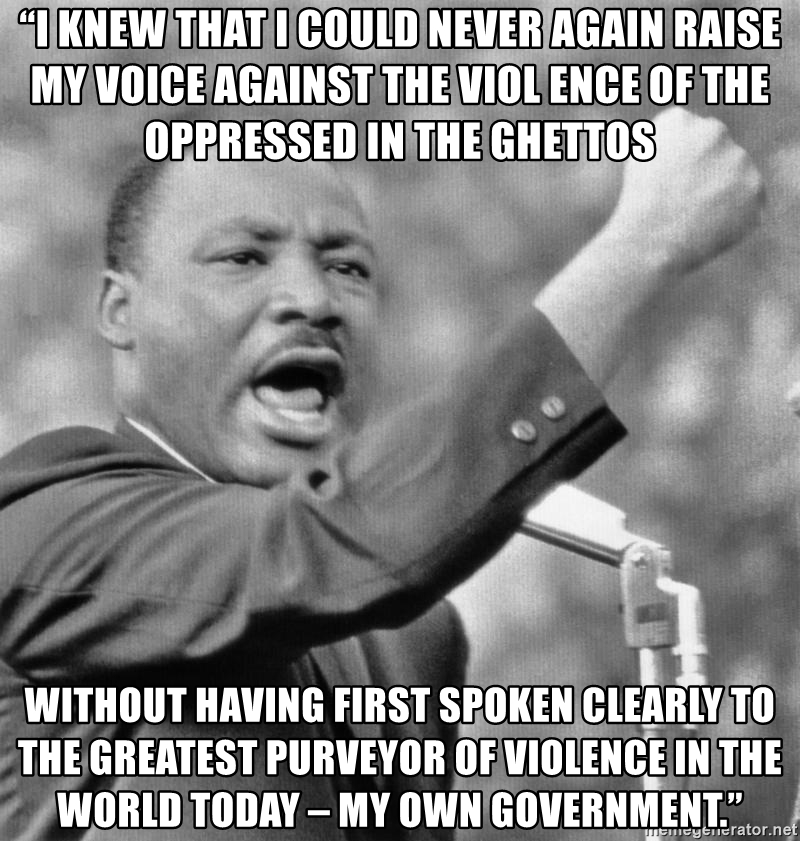
America has a long history of using Reapers to spy on people, to wage wars, to overthrow foreign governments, to carry out mass murder and, generally, to wreak havoc and destruction around the world. This, of course, has never stopped the Canadian government from allowing the export of CAE and WESCAM technologies to the US so that it can maximize its use of these deadly Reapers.
Neither, for that matter, has Canada’s government ever seen fit to prevent any other Canadian war industry from feeding the voracious appetite of the US military industrial complex. While about half of Canada’s military production is exported, as much as two thirds of those exports go to the US. This huge flow of Canadian military hardware has been deeply entrenched in the world’s closest economic trade relationship since the Canada-US Defence Production Sharing Agreement was signed in 1956.(47)
For many decades, the Canadian government has required domestic military industries to obtain permits for their exports around the world, except, that is, for arms sales to the US. This exemption has served to ensure the free and unrestricted flow of Canadian military exports to the US. Since, over the deaces, the Canadian government has handed out billions in grants and “investments” to support the business prospects of Canada’s hugely profitable military industries, the US has been able to benefit from unfettered access to its northerly neighbour’s generously subsidized military industrial base.
In stark contrast, the flow of publicly accessible information about Canada’s traffic in arms to the US has been severely restricted by our government. Although limited, generalized information about Canadian military exports to other countries is made public in government reports, virtually all data on Canada’s military sales to the US have long been completely excluded from this reporting process. This of course has made it extremely difficult to monitor Canada’s contributions to the US war machine. This lack of transparency is unacceptable not only because America is by far the largest recipient of Canadian military products and services, but because it can still accurately be seen as “the greatest purveyor of violence in the world” (as Martin Luther King Jr. put it in 1967).(48)
Regardless of which particular brand of drones is acquired by the Canadian military, activists will soon have to contend with the fact that their government has acquired yet another tool for its deadly arsenal of war. This will not only allow Canada’s military to increase its practical support for US-led foreign invasions and interventions, it will also give even more resources to police forces which have been spying on progressives since this country’s inception.(49)
2020 Vision: Watching the Watchers and Watching Ourselves
By watching the watchers we progressives become more aware of the continuing crimes committed by those powerful institutions which have put us in their surveillance sights. In the process we also build our awareness of how these institutions have been victorious in the battle to fabricate and frame the public’s limited understanding of history.
But besides watching the watchers it is important to be ever more vigilant in watching ourselves and those civil organizations which claim to represent our best interests. For centuries, good honest Canadians have been convinced to support criminally-harmful state policies and to collaborate in turning those policies into reality. The complicity of Canada’s churches in the genocide of First Nations peoples is a case in point. It illustrates how decent, well-meaning Canadians became so enamoured by entrancing mainstream narratives of racism, xenophobia and white superiority, that they went beyond just turning a blind eye to repressive policies, and actively administered the crimes that were committed throughout the entire Residential School process. These crimes were, afterall, conducted in the name of helping those poor so-called “savages” who were wrongly seen to be in great need of a benevolent grace that could best be bestowed by the great uplifting processes of civilization, Christianization and Canadianization.(50)
So, while it is important to watch the watchers who oversee the ongoing international crimes against peace and crimes against humanity, it is — perhaps counterintuitively — even more important to watch ourselves. Although we have little if any real power to influence those who hold sway over global military, political and financial institutions, we do have a fighting chance at influencing our own behaviour. With this in mind it may be useful to engage in thought experiments to imagine ourselves standing at a vantage point 100 years in the future from whence we can look back in hindsight at the present day.
Just as Reaper drones hover above the social fray looking down upon us all from a great distance, we can try to escort our imaginations to a point in time when we as individuals will all be long dead. From that hopefully more advanced point of view we can perhaps more objectively see the current flaws in our society and then ask ourselves what crimes Canadians were unwittingly committing back in the dark days of 2020. By viewing ourselves through this Reaper like “Magic Mirror” hovering on the other side of our own deaths, we may be able to see some way to prevent Canadians from becoming even further complicit in vast crimes that many cannot yet even see.
Defunding the Military and Defusing NATO
Besides calling on Canada to defund the police, many activists are also ramping up demands to defund the military. What better bank of resources is there than Canada’s vast military coffers to find the monetary resources needed to invest in institutions that promote health, education, day care, mass transportation and environmental protection? Instead of continually electing politicians that unquestionably increase financing to feed our military’s unquenchable desire for more and more weapons, Canadians need a government that will instead fund socially-useful and environmentally-sustainable solutions to the world’s collective problems. By doing so, the Canadian could not only create far more jobs at home, it could — for a change — actually have a positive influence on the world. Demilitarizing Canada and the planet would be extremely beneficial in many ways, not least of which because the armed forces burn more fossil fuels, and hence contribute more to catastrophic climate change, than any other force on earth.
No to NATO
Instead of continually aiding and abetting US-led wars, and further promoting the most destructive, exploitative practices of unfettered capitalism, Canada desperately needs to make an abrupt about face. We need, for example, to have a government that will stop dressing itself up behind phoney facades of sensitivity to the evils of racism, and begin to actually take practical steps to eradicate the systemic, institutionalised racism that riddles the Canadian state. This work must begin by recognizing the continuing harm that has been done by the centuries of genocide, slavery and imperial land plunder upon which the whole Canadian nation-building project has long been based.
The struggle to end Canada’s longstanding complicity in war could start by severing our military ties to the US, and by removing ourselves from NATO. This aggressive military alliance is a major threat to world peace and Canada should have no part in it. NATO still maintains its founding doctrine which is based on its willingness to prepare for and wage nuclear war. Canada also needs to sign and ratify the UN treaty to ban nuclear weapons. And, while we’re dreaming in technocolour, Canada should stop mining uranium, stop plans for spreading mini nuclear reactors across the north, and stop creating more nuclear waste because we simply cannot dispose of the vast stores of this deadly material that we have already amassed.
But achieving such utopian visions of an independent, peaceful and just Canada will always remain in the realm of fairy-tales unless Canadians, as a small first step, are able to free themselves from the many powerful myths and deceptive narratives that distort this country’s self awareness. Because these grand national myths constrict Canadians’ understanding of history and obscure our current complicity in international crimes, they form major ideological obstacles which block the work of progressive people struggling for social change. Only by becoming more aware and mindful of our Peaceable Kingdom’s powerful mythologies, can Canadians hope to ever extricate this country from its ongoing collaboration with the American imperium of war and repression.
*
Note to readers: please click the share buttons above or below. Forward this article to your email lists. Crosspost on your blog site, internet forums. etc.
Richard Sanders is the editor/producer of Press for Conversion!, magazine of the Coalition to Oppose the Arms Trade.
Notes
1. U.S. Regime Has Killed 20-30 Million People Since World War II
https://www.globalresearch.ca/u-s-regime-has-killed-20-30-million-people-since-world-war-ii/5633111
2. Joseph Trevithick, Customs and Border Protection Reaper Drone Appears Over Minneapolis Protests, May 29, 2020.
https://www.thedrive.com/the-war-zone/33756/customs-and-border-protection-predator-b-drone-appears-over-minneapolis-protests
3. Calling itself “one of the world’s largest law enforcement organizations,” the CPB says it “is charged with keeping terrorists and their weapons out of the U.S. while facilitating lawful international travel and trade.”
About CBP
https://www.cbp.gov/about
While the CBP is only allowed to operate within 100 miles of the US border, Minneapolis and San Antonio are beyond that 100-mile zone.
The Constitution in the 100-Mile Border Zone, American Civil Liberties Union
https://www.aclu.org/other/constitution-100-mile-border-zone
4. Joseph Cox, “The Government Is Regularly Flying Predator Drones Over American Cities,” Vice Motherboard, June 3, 2020
https://www.vice.com/en_us/article/n7wnzm/government-flying-predator-drones-american-cities
5. Joe Lauria, “Fear of a Major Mideast War,” Consortiumnews, January 2, 2020
https://consortiumnews.com/2020/01/02/fear-of-a-major-mideast-war/
6. Prime Minister announces new project to create jobs and improve training in Canada’s aerospace and healthcare sectors, August 8, 2018.
https://pm.gc.ca/en/news/news-releases/2018/08/08/prime-minister-announces-new-project-create-jobs-and-improve-training
7. Feds invest $75M in Burlington’s Wescam, The Hamilton Spectator, March 24, 2015.
https://www.thespec.com/business/2015/03/24/feds-invest-75m-in-burlington-s-wescam.html
8. Peter Goodchild, “Meet the real Dr Strangelove,” The Guardian, Apr 1, 2004.
https://www.theguardian.com/science/2004/apr/01/science.research1
9. Setsuko Thurlow, An open letter to the Prime Minister of Canada from a survivor of the Hiroshima A-Bombing, August 7, 2020
https://countercurrents.org/2020/08/an-open-letter-to-the-prime-minister-of-canada-from-a-survivor-of-the-hiroshima-a-bombing/
10. General Dynamics Corporation History
http://www.fundinguniverse.com/company-histories/general-dynamics-corporation-history/
11. Ibid.
12. Ibid.
13. James Temperton, ‘Now I am become Death, the destroyer of worlds’. The story of Oppenheimer’s infamous quote,” Wired, Aug 9. 2017.
https://www.wired.co.uk/article/manhattan-project-robert-oppenheimer
14. 1962-1963, Canada: ‘Knocking Over’ “Dief the Chief”
A Plot “Made in the U.S.”
http://coat.ncf.ca/our_magazine/links/issue43/articles/plot_made_in_us.htm
Key Quotations on the events of January 1963
http://coat.ncf.ca/our_magazine/links/issue43/articles/key_quotations_on_the_events.htm
CIA Fingerprints
The Americans behind the Plot to Oust John Diefenbaker
http://coat.ncf.ca/our_magazine/links/issue43/articles/cia_fingerprints.htm
John Diefenbaker’s “Made in Canada” Policies
http://coat.ncf.ca/our_magazine/links/issue43/articles/john_diefenbaker.htm
15. “Books on Nuclear Weapons in Canada,” Press for Conversion! Issue # 39 Dec. 1999. p.32.
http://coat.ncf.ca/P4C/39.pdf
Nuclear Weapons: Preparing for Global Annihilation, Press for Conversion! Issue # 48 July 2002. p.40.
http://coat.ncf.ca/our_magazine/links/issue48/articles/40.pdf
John Clearwater. Canadian Nuclear Weapons: The Untold Story of Canada’s Cold War Arsenal, 1998, pp.91–116.
John Clearwater, US Nuclear Weapons in Canada, 1999.
Canada’s Nuclear Strike Force: 1st Air Division 1964-1972 , 10 August 2015
https://web.archive.org/web/20170728201632/http://www.tailsthroughtime.com/2015/08/canadas-nuclear-strike-force-1st-air.html
16. Top 100 for 2019
https://people.defensenews.com/top-100/
17. “69M to Reset 265 Stryker ICVs Back from Iraq,” Defense Industry Daily, Nov. 8, 2005.
https://www.defenseindustrydaily.com/69m-to-reset-265-stryker-icvs-back-from-iraq-01450/
18. CAE Predator Mission Trainer (PMT)0
https://www.cae.com/media/media-center/documents/DM104-PredatorMissionTrainer_ENG_September2019.pdf
19. CAE-built Predator Mission Trainer now in-service at General Atomics Flight Test and Training Center in North Dakota, CAE, Apr 7, 2020.
https://www.asdnews.com/news/defense/2020/04/07/caebuilt-predator-mission-trainer-now-inservice-at-general-atomics-flight-test-training-center-north-dakota
20. L3Harris was formed in 2019 through a merger of L3 Technologies and Harris Corp., America’s 7th and 12th largest war industries.
Top 100 for 2019, op. cit.
The Canada Pension Plan holds $49 million in L3Harris stocks.
Foreign public equity holdings as at March 31, 2020
https://cdn4.cppinvestments.com/wp-content/uploads/2020/06/Foreign-Publicly-Traded-Equity-Holdings-ibfs-06-2020-en-v2.htm
21. EO/IR Targeting System Integrated into MQ-9 Predator UAS, Mar 5, 2020.
https://www.unmannedsystemstechnology.com/2020/03/eo-ir-targeting-system-integrated-into-mq-9-predator-uas/
Technical specifications and performance of WESCAM’s MX-20 used by the Predator can be found here:
WESCAM MX™-20
https://www.wescam.com/products-services/airborne-surveillance-and-reconnaissance/mx-20/
22. AH-1 “Cobra” Attack Helicopter
Richard Sanders, Table: “Canadian War Industries Exporting Parts and/or Services to the USA for the AH-1 ‘Cobra,'” COAT Campaign to Oppose CANSEC, 2009.
http://coat.ncf.ca/ARMX/cansec/AH-1.htm
C-130 “Hercules” Tactical transport
Richard Sanders, “C-130 ‘Hercules,'” Press for Conversion! (Issue # 52) October 2003, p.15
http://coat.ncf.ca/our_magazine/links/52/15.pdf
P-3 “Orion” Maritime Patrol Aircraft
Richard Sanders, Table: “Canadian War Industries Exporting Parts and/or Services to the USA for the P-3 ‘Orion,'” COAT Campaign to Oppose CANSEC, 2009.
http://coat.ncf.ca/ARMX/cansec/P-3.htm
Richard Sanders, P-3C“’Orion,'” Press for Conversion! Issue # 52 October 2003, p.24.0
http://coat.ncf.ca/our_magazine/links/52/24.pdf
British MR2 “Nimrod” Maritime Patrol Aircraft
Richard Sanders, “Lt.Col. Jason Major and Col. Bill Seymourserved with LRP Squads in Iraq, 2003,” Press for Conversion! (Issue # 65), p.44, December 2010.
http://coat.ncf.ca/P4C/65/44-45.pdf
23. William Smith, A Smaller Classical Dictionary of Biography, Mythology, and Geography, 1878.
https://books.google.ca/books?id=fZUOAAAAYAAJ&pg=PA235&dq=Smith+Classical+Dictionary+Lucifer&hl=en&sa=X&redir_esc=y#v=onepage&q=
Smith%20Classical%20Dictionary%20Lucifer&f=false
24. CAE has, for example, supplied training systems for at least 47 varieties of military helicopters, eleven varieties of military patrol/transport planes, six varieties of fighter jets, and five varieties of tanks and artillery. CAE also played a crucial role in “Missile Defense” weapons systems.
Helicopter Aircrew Training Solutions, p.3.
https://www.cae.com/media/documents/Helicopter_Aircrew_Training_Solutions.pdf
Portfolio of Experience, Patrol/Transport Program Highlights, CAE website
https://web.archive.org/web/20080309120710/http://www.cae.com/www2004/Products_and_Services/Military_Simulation_and_Training/Portfolio_of_
Experience/ptExperience.shtml
Fighter/Trainer Training Solutions
https://www.cae.com/media/documents/BM034_Fighter_Trainer_Aircraft_Training_Solutions_lowres.pdf
Land Training Systems Program Highlights, CAE website
http://www.cae.com/www2004/Products_and_Services/Military_Simulation_and_Training/Portfolio_of_Experience/ltsExperience.shtml
Richard Sanders, CAE Ltd., “Canada’s Role in so called ‘Missile Defense,'” #56 June 2005, pp.32-37
http://coat.ncf.ca/our_magazine/links/56/Articles/56_32-37.pdf
25. “Op Podium Air Component delivers,” April 21, 2010.
www.airforce.forces.gc.ca/v2/nr-sp/index-eng.asp?id=10457
26. Ibid.
27. Jerry Langton, “L-3 WESCAM and L-3 Communication Systems-West: Joining forces to supply critical systems for the Canadian Forces,” Canadian Defence Review, April 2010.
www.wescam.com/pdf/media/L-3Wescam_and_L-3Systems_West.pdf
28. Military freq for G20
http://forums.radioreference.com/ontario/184053-military-freq-g20-2.html
29. Canadians send message to G20 in re-cent Toronto violence
http://rabble.ca/babble/national-news/canadians-send-message-g20-recent-toronto-violence
30. G20 in Toronto
http://community.the-digital-picture.com/image_presentation1/f/15/p/4127/34973.aspx#34973
31 “Op Cadence,” Petawawa Post, July 8,2010.
www.cg.cfpsa.ca/cg-pc/Petawawa/EN/InformationandFAQ/Newspapers/PetPost/Documents/8July2010.pdf
32. Maj. K.Rennie and Capt. M. Crosbie ,“Tactical Air Control, TACP for Op Cadence,” Petawawa Post, July 8, 2010.
33. Major CMR Larsen, “14 Wing CP-140 Aurora participates on Operation NANOOK,” September 9, 2010.
www.airforce.forces.gc.ca/14w-14e/nr-sp/index-eng.asp?id=10962
34. “Local RCMP officer assists in security efforts at G8 and G20 Summits,” Shaunavon Standard, August 31, 2010.
www.theshaunavonstandard.com/news/lo-cal-news/192.html
35. Ibid
36. Pat Kolaf, “High alert guarding nuclear warheads,” Drumheller Mail, 11 Nov 2015.
https://www.drumhellermail.com/news/27705-high-alert-guarding-nuclear-warheads
37. Vision, Mission, and Creed
www.airforce.forces.gc.ca/19w-19e/sqns-escs/page-eng.asp?id=854
38. Ibid.
39. David Pugliese, “Heron and MQ-9 drones approved for Canadian military program,” Ottawa Citizen, Oct. 17, 2019.
https://ottawacitizen.com/news/national/defence-watch/heron-and-mq-9-drones-approved-for-canadian-military-program
40. “Confirmed figures reveal the true extent of the destruction inflicted upon the Gaza Strip; Israel’s offensive resulted in 1,417 dead, including 926 civilians, 255 police officers, and 236 fighters”. Archived from the original on 12 June 2009. Retrieved 19 March 2009.. Palestinian Centre for Human Rights, 12 March, 2009.
41. Canadian Forces Briefing on UAVs, Flight 8 Meeting, 24 June 2009
https://archive.vn/meNdh
42. David Pugliese, “Would Armed Heron UAVs Make Sense for the Canadian Forces in Afghanistan?” Ottawa Citizen, Nov 25, 2009.
https://ottawacitizen.com/news/national/defence-watch/would-armed-heron-uavs-make-sense-for-the-canadian-forces-in-afghanistan
43. About Team SkyGuardian Canada
https://www.ga-asi.com/teamskyguardiancanada/about
44. Richard Sanders, “RQ-1 “”Predator,” Press for Conversion! (Issue # 52), October 2003. p.25.
http://coat.ncf.ca/our_magazine/links/52/25.pdf
45. About Team SkyGuardian Canada, op. cit.
46. Canada’s Role in the Militarisation of Space: RADARSAT – The Warfighters’ Eye in the Sky and its links to ‘Missile Defense ‘” Press for Conversion, Issue#58, March 2006.
http://coat.ncf.ca/our_magazine/links/58/58.html
47. Defence Production Sharing Agreement between Canada and the United States Of America, July 27, 1956.
https://www.ccc.ca/wp-content/uploads/2019/05/defence-production-sharing-agreement-en.pdf
48. King, Martin Luther, Jr., “Beyond Vietnam,” April 4, 1967.
https://kinginstitute.stanford.edu/king-papers/documents/beyond-vietnam
49. “A Partial List of RCMP Files on Peace Groups,” Press for Conversion! Issue # 39 Dec. 1999. p.28-31.
http://coat.ncf.ca/P4C/39.pdf
50. Richard Sanders, Fictive Canada: Indigenous Slaves and the Captivating Narratives of a Mythic Nation, Issue#69, Fall 2017.
http://coat.ncf.ca/P4C/69/69_2-3.htm
All images in this article are from the author


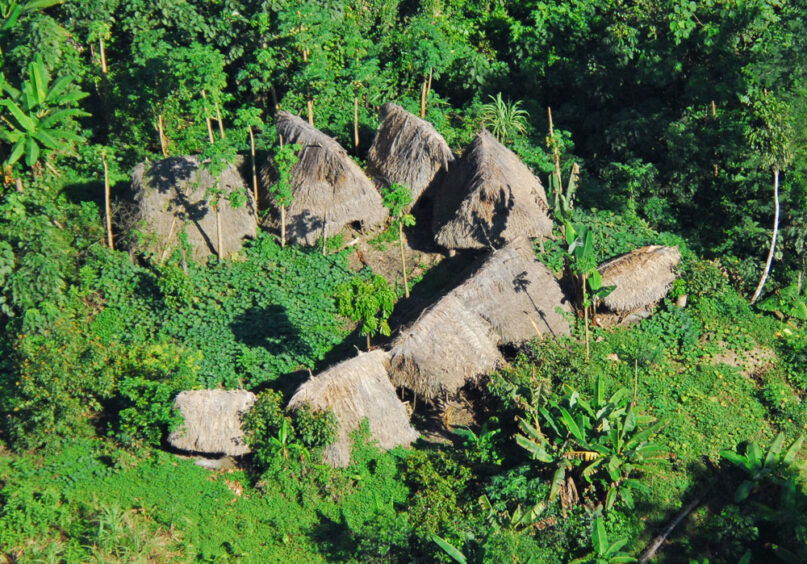

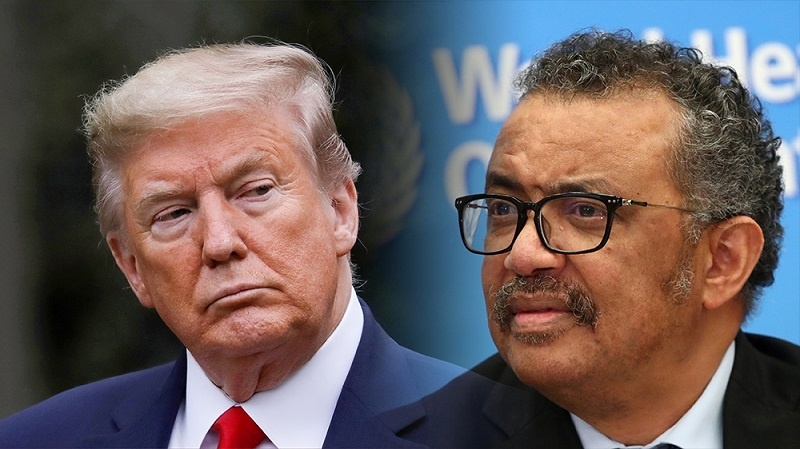

 Criticize Anthony Fauci or the national security councils regarding Covid-19, then yes, you will be accused of conspiracy, indeed of all evils.
Criticize Anthony Fauci or the national security councils regarding Covid-19, then yes, you will be accused of conspiracy, indeed of all evils.